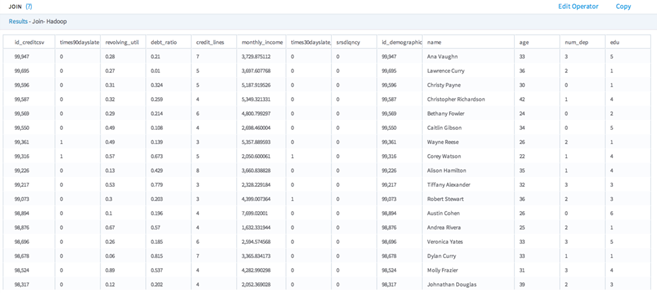Join (DB)
Performs a table join on the input data sets by allowing users to define the input data set alias, the output columns, and the join condition.
Information at a Glance
Note: The Join (DB) operator is for database data only. For Hadoop data, use the
Join (HD) operator.
Input
Accepts two or more data sets.
Note: Both tables must be located in the same database. Join does not work on tables located in different databases. See the
Team Studio
Operator Compatibility Matrix for any data source exceptions for the Join operator.
Configuration
| Parameter | Description |
|---|---|
| Notes | Any notes or helpful information about this operator's parameter settings. When you enter content in the Notes field, a yellow asterisk is displayed on the operator. |
| Create Sequence ID | Click Yes to create an ID column on the output data set of the Join operator. |
| Join Conditions |
Click
Set Table Join Parameters to display the
Join Properties dialog box.
For information about the options, see Join Properties - Database Dialog Box. For information about creating the Join condition, see Creating a Join condition for a database join.. |
| Output Type | |
| Output Schema | The schema for the output table or view. |
| Output Table | The table path and name where the results are output. By default, this is a unique table name based on your user ID, workflow ID, and operator. |
| Storage Parameters | Advanced database settings for the operator output. Available only for
TABLE output.
See Storage Parameters Dialog Box for more information. |
| Drop If Exists | Specifies whether to overwrite an existing table. |
Related reference
Copyright © Cloud Software Group, Inc. All rights reserved.


